46 products
-
Alocasia Frydek Variegata
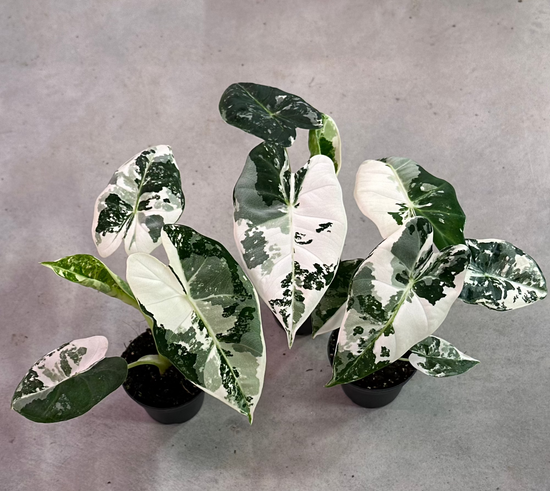 Vendor:Harmony PlantsAlocasia Frydek Variegata
Vendor:Harmony PlantsAlocasia Frydek Variegata- Regular price
-
From
€8,99 - Regular price
-
€29,00 - Sale price
-
From
€8,99
-
Alocasia Dragon Scale Mint
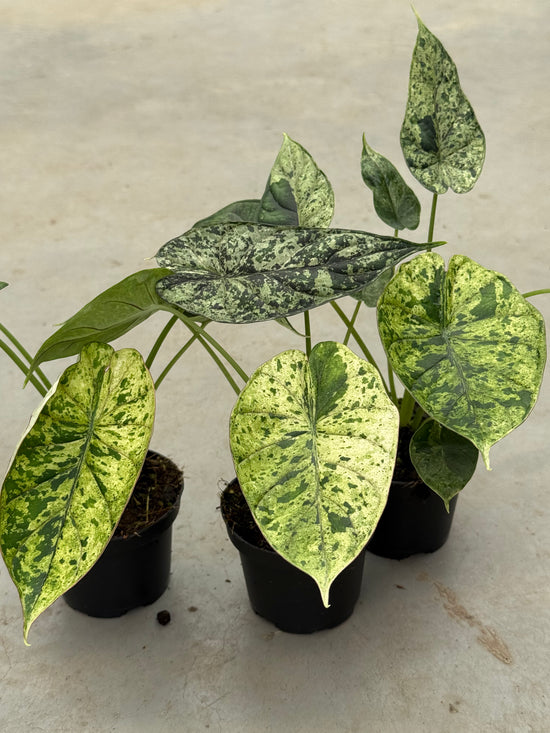 Vendor:Harmony PlantsAlocasia Dragon Scale Mint
Vendor:Harmony PlantsAlocasia Dragon Scale Mint- Regular price
-
€19,99 - Regular price
-
€39,00 - Sale price
-
€19,99
-
Alocasia Macrorrhiza Splash
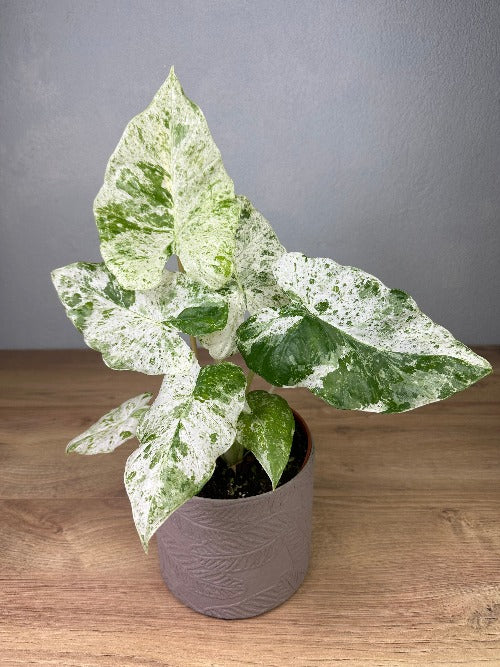 Vendor:Harmony PlantsAlocasia Macrorrhiza Splash
Vendor:Harmony PlantsAlocasia Macrorrhiza Splash- Regular price
-
€11,99 - Regular price
-
€39,99 - Sale price
-
€11,99
-
B Ware / Sad Plant (We Choose)
 Vendor:Harmony PlantsB Ware / Sad Plant (We Choose)
Vendor:Harmony PlantsB Ware / Sad Plant (We Choose)- Regular price
-
€10,00 - Regular price
-
€10,01 - Sale price
-
€10,00
-
Mystery Plant
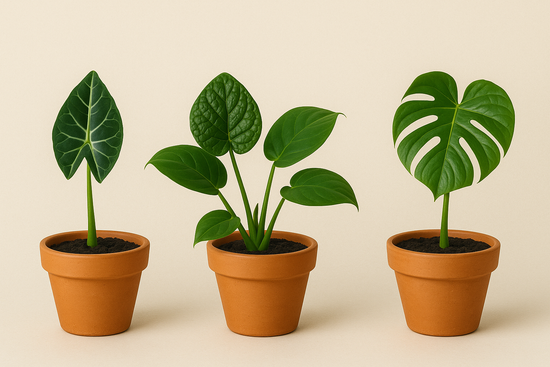 Vendor:Harmony PlantsMystery Plant
Vendor:Harmony PlantsMystery Plant- Regular price
-
From
€10,00 - Regular price
-
€10,01 - Sale price
-
From
€10,00
-
Alocasia Polly Aurea
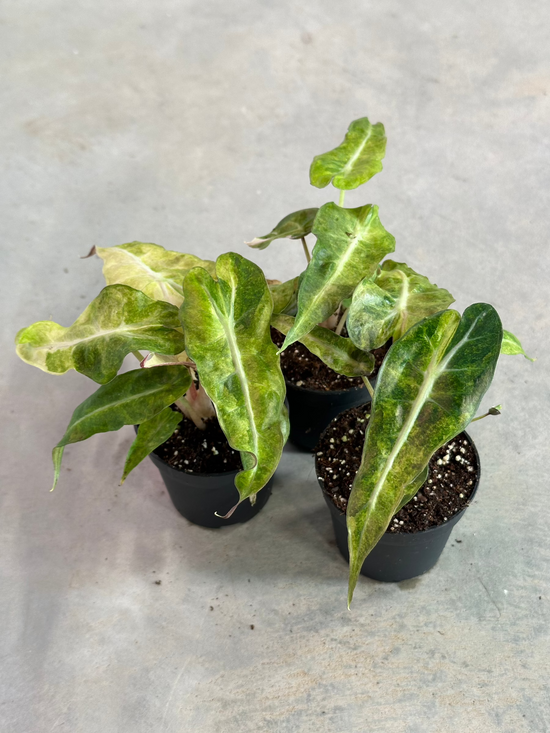 Vendor:Harmony PlantsAlocasia Polly Aurea
Vendor:Harmony PlantsAlocasia Polly Aurea- Regular price
-
€15,00 - Regular price
-
€30,00 - Sale price
-
€15,00
-
Alocasia Jacklyn Variegata
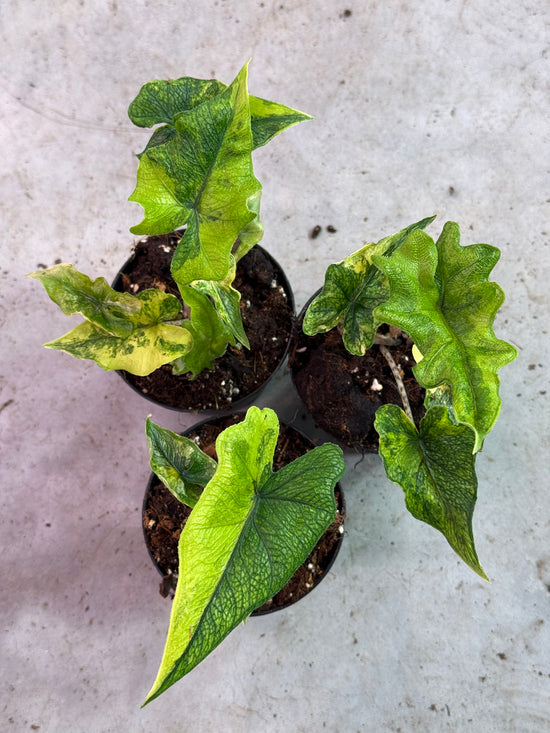 Vendor:Harmony PlantsAlocasia Jacklyn Variegata
Vendor:Harmony PlantsAlocasia Jacklyn Variegata- Regular price
-
€69,00 - Regular price
-
€119,00 - Sale price
-
€69,00
-
B Ware Plants / sad plants Part 3
 Vendor:Harmony PlantsB Ware Plants / sad plants Part 3
Vendor:Harmony PlantsB Ware Plants / sad plants Part 3- Regular price
-
€39,00 - Regular price
-
- Sale price
-
€39,00
-
Alocasia Melo Variegata
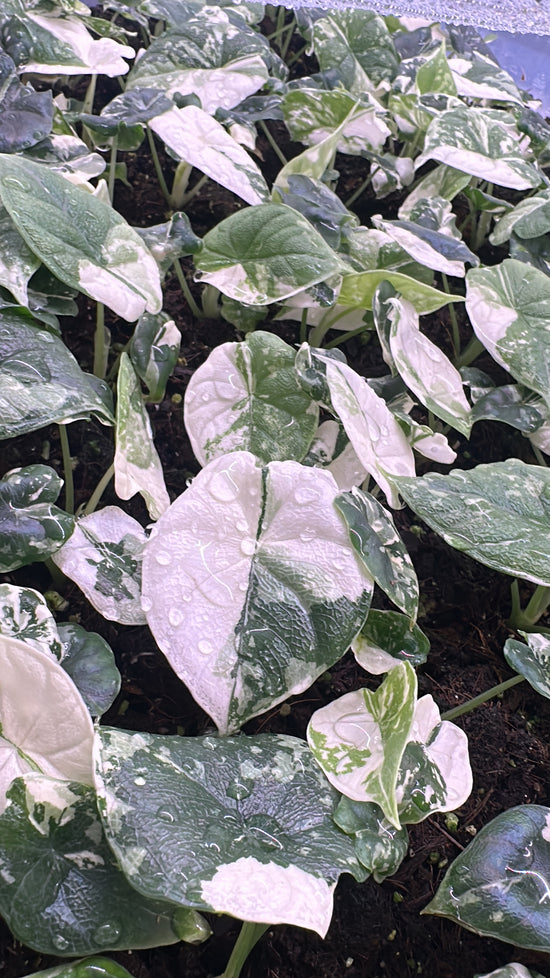 Vendor:Harmony PlantsAlocasia Melo Variegata
Vendor:Harmony PlantsAlocasia Melo Variegata- Regular price
-
€149,99 - Regular price
-
€249,99 - Sale price
-
€149,99
-
Alocasia Simpo Albo Variegata
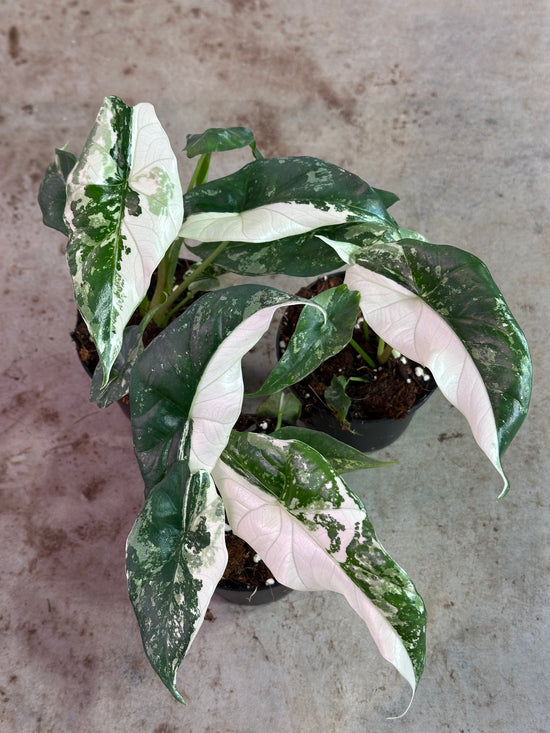 Vendor:Harmony PlantsAlocasia Simpo Albo Variegata
Vendor:Harmony PlantsAlocasia Simpo Albo Variegata- Regular price
-
€69,99 - Regular price
-
€249,00 - Sale price
-
€69,99
-
Alocasia Black Velvet Pink Variegata
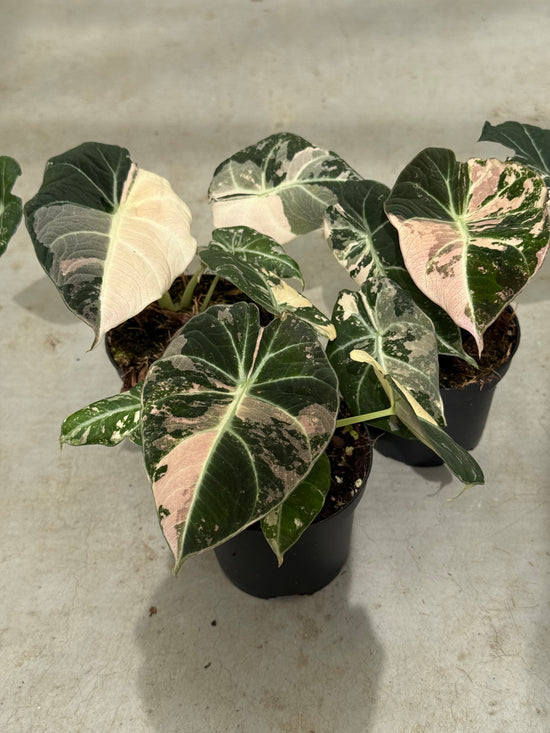 Vendor:Harmony PlantsAlocasia Black Velvet Pink Variegata
Vendor:Harmony PlantsAlocasia Black Velvet Pink Variegata- Regular price
-
€25,00 €49,00 - Regular price
-
€179,00 - Sale price
-
€25,00 €49,00
-
Alocasia Dragon Scale Variegata (with free pot)
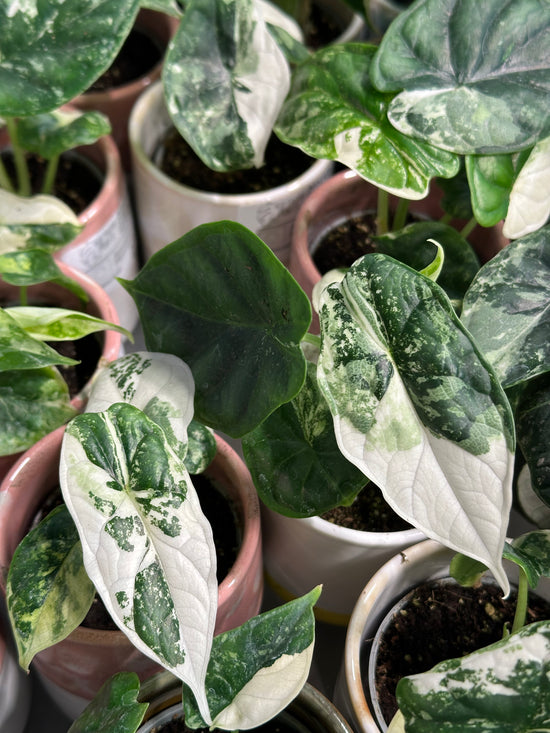 Vendor:Harmony PlantsAlocasia Dragon Scale Variegata (with free pot)
Vendor:Harmony PlantsAlocasia Dragon Scale Variegata (with free pot)- Regular price
-
€32,99 - Regular price
-
€79,00 - Sale price
-
€32,99
-
Alocasia Gageana Albo Variegata
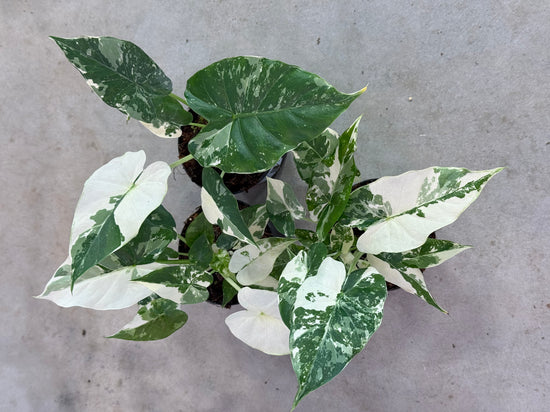 Vendor:Harmony PlantsAlocasia Gageana Albo Variegata
Vendor:Harmony PlantsAlocasia Gageana Albo Variegata- Regular price
-
€9,99 - Regular price
-
€14,99 - Sale price
-
€9,99
-
Alocasia Polly Variegata
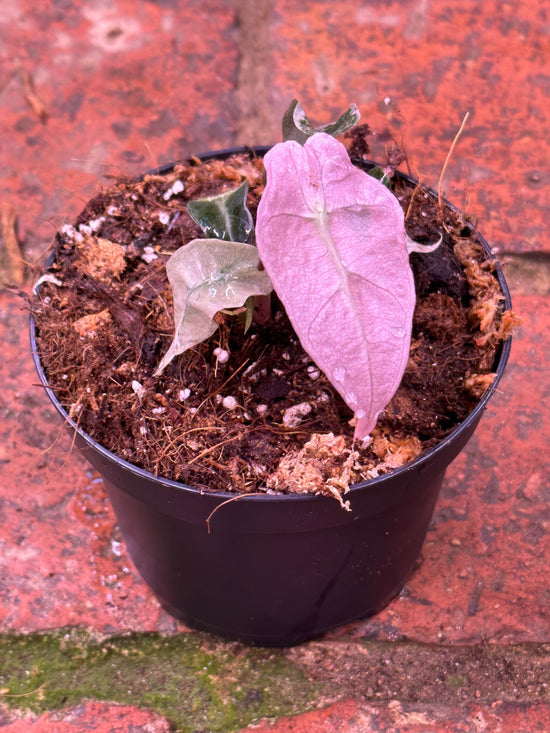 Vendor:Harmony PlantsAlocasia Polly Variegata
Vendor:Harmony PlantsAlocasia Polly Variegata- Regular price
-
€29,99 - Regular price
-
€49,99 - Sale price
-
€29,99
-
Alocasia Jacklyn
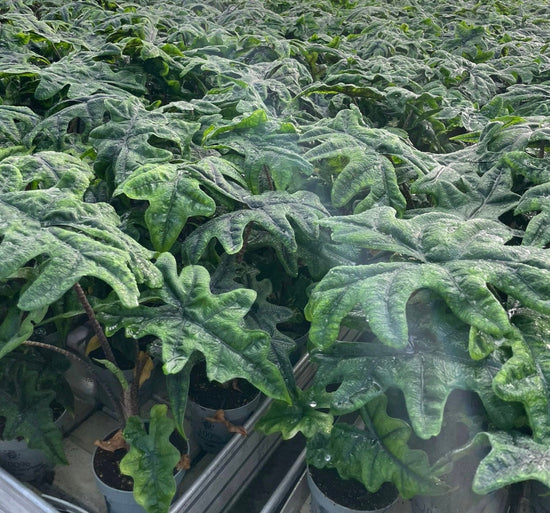 Vendor:Harmony PlantsAlocasia Jacklyn
Vendor:Harmony PlantsAlocasia Jacklyn- Regular price
-
€6,99 €19,99 - Regular price
-
€14,99 - Sale price
-
€6,99 €19,99
-
Alocasia Silver Dragon Variegata
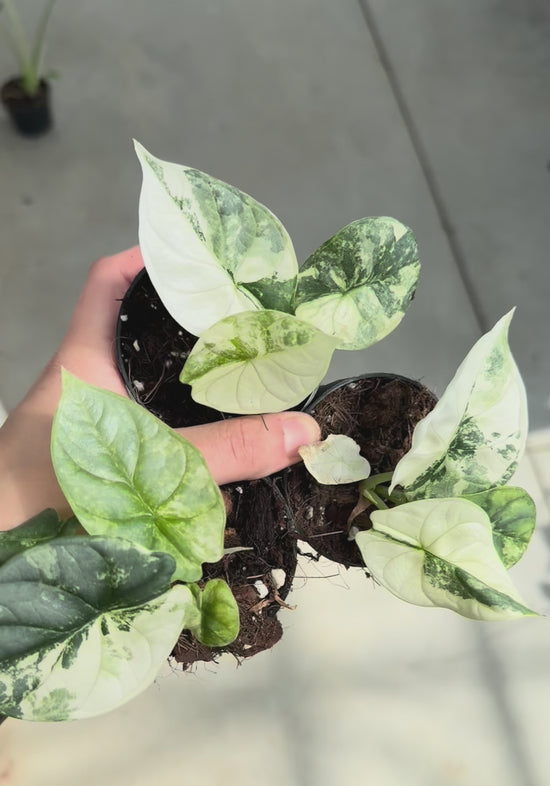 Vendor:Harmony PlantsAlocasia Silver Dragon Variegata
Vendor:Harmony PlantsAlocasia Silver Dragon Variegata- Regular price
-
€24,99 - Regular price
-
€55,00 - Sale price
-
€24,99
-
Alocasia Lauterbachiana Variegata
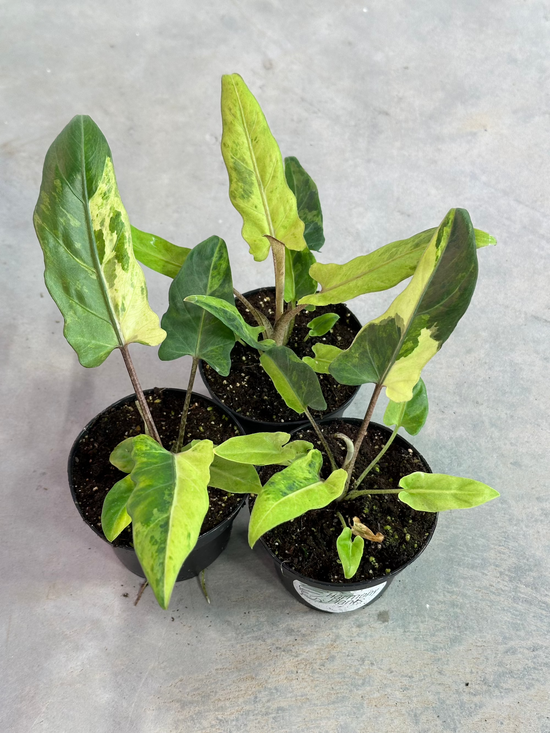 Vendor:Harmony PlantsAlocasia Lauterbachiana Variegata
Vendor:Harmony PlantsAlocasia Lauterbachiana Variegata- Regular price
-
€14,99 - Regular price
-
€24,99 - Sale price
-
€14,99
-
Alocasia Ninja Variegata
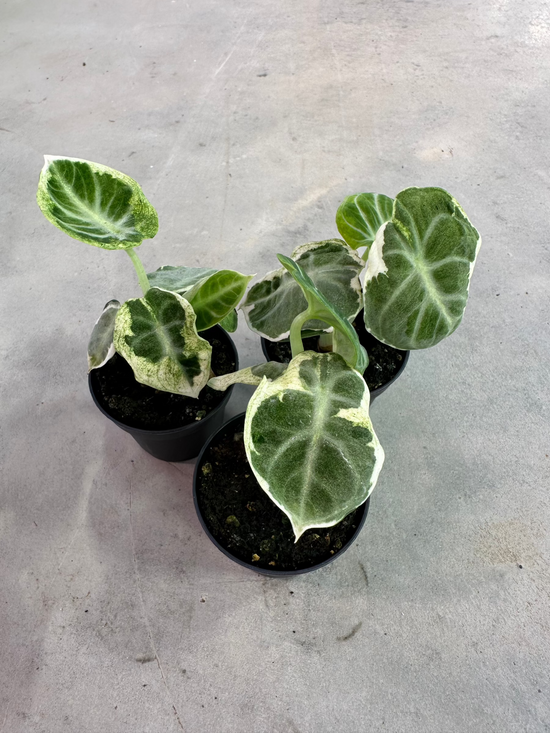 Vendor:Harmony PlantsAlocasia Ninja Variegata
Vendor:Harmony PlantsAlocasia Ninja Variegata- Regular price
-
€22,99 - Regular price
-
€39,99 - Sale price
-
€22,99
-
Alocasia Macrorrhiza Variegata
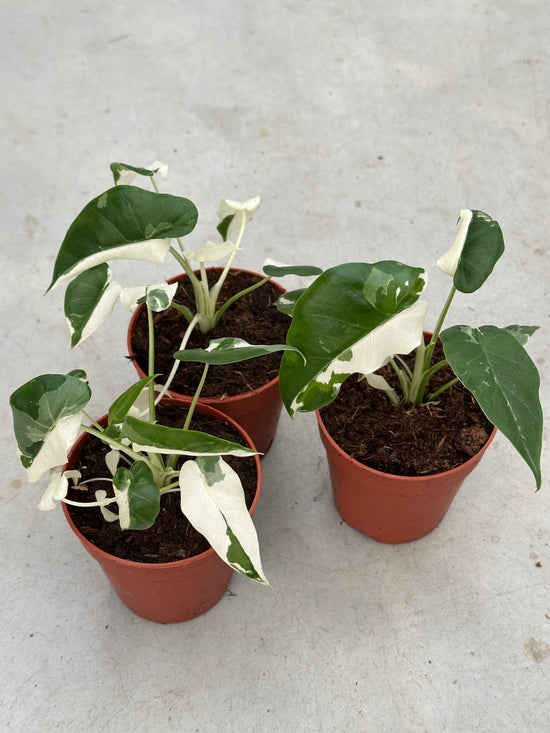 Vendor:Harmony PlantsAlocasia Macrorrhiza Variegata
Vendor:Harmony PlantsAlocasia Macrorrhiza Variegata- Regular price
-
€14,99 - Regular price
-
€49,00 - Sale price
-
€14,99
-
Alocasia Melo
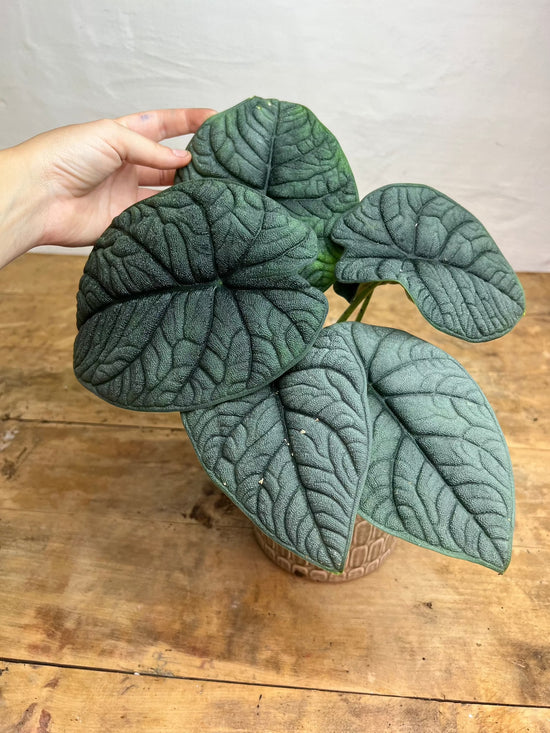 Vendor:Harmony PlantsAlocasia Melo
Vendor:Harmony PlantsAlocasia Melo- Regular price
-
€7,99 €24,99 - Regular price
-
€39,00 - Sale price
-
€7,99 €24,99
-
Alocasia Bambino Variegata
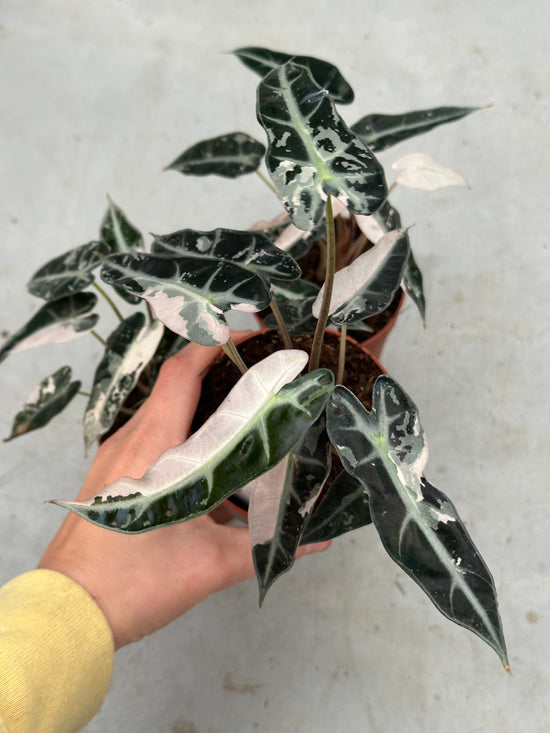 Vendor:Harmony PlantsAlocasia Bambino Variegata
Vendor:Harmony PlantsAlocasia Bambino Variegata- Regular price
-
€39,00 - Regular price
-
€89,00 - Sale price
-
€39,00
-
Alocasia Yucatan Princess Variegata
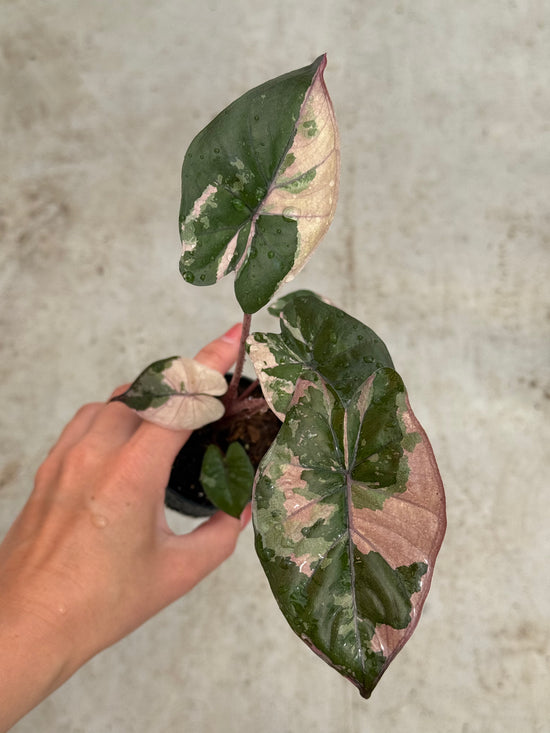 Vendor:Harmony PlantsAlocasia Yucatan Princess Variegata
Vendor:Harmony PlantsAlocasia Yucatan Princess Variegata- Regular price
-
€65,00 - Regular price
-
€179,00 - Sale price
-
€65,00
-
Alocasia Maharani Plug
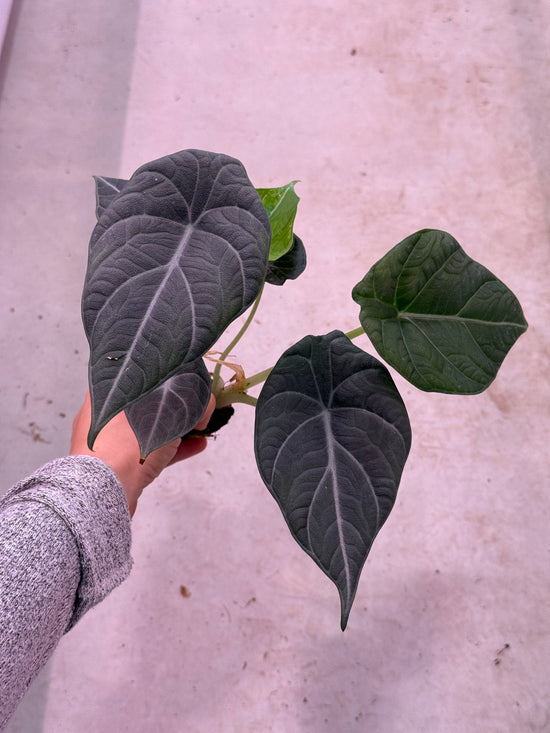 Vendor:Harmony PlantsAlocasia Maharani Plug
Vendor:Harmony PlantsAlocasia Maharani Plug- Regular price
-
€9,99 - Regular price
-
€14,99 - Sale price
-
€9,99
-
Alocasia Black Velvet Gold Variegata
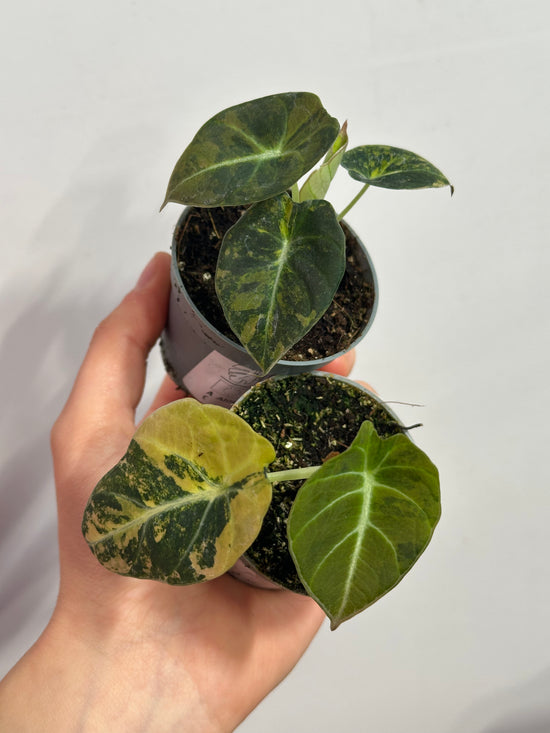 Vendor:Harmony PlantsAlocasia Black Velvet Gold Variegata
Vendor:Harmony PlantsAlocasia Black Velvet Gold Variegata- Regular price
-
€39,00 - Regular price
-
€89,00 - Sale price
-
€39,00
-
Alocasia Cuprea Variegata
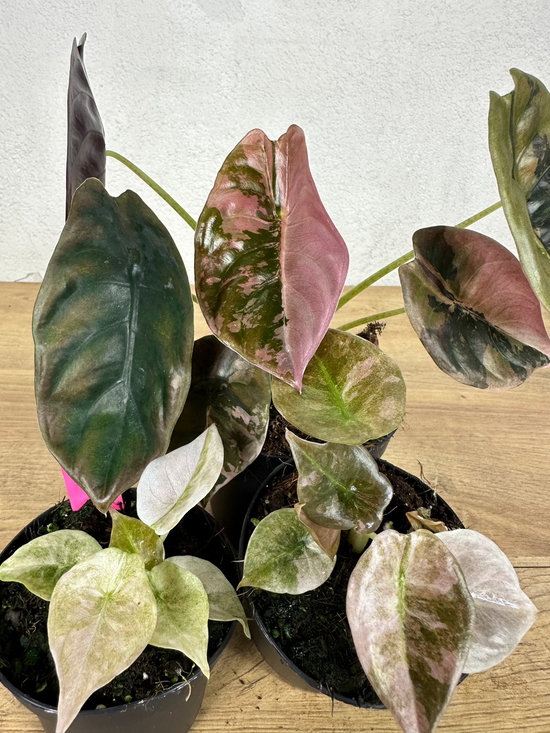 Vendor:Harmony PlantsAlocasia Cuprea Variegata
Vendor:Harmony PlantsAlocasia Cuprea Variegata- Regular price
-
€79,00 - Regular price
-
€39,00 - Sale price
-
€79,00
-
Alocasia Dragon Scale Variegata "LARGE"
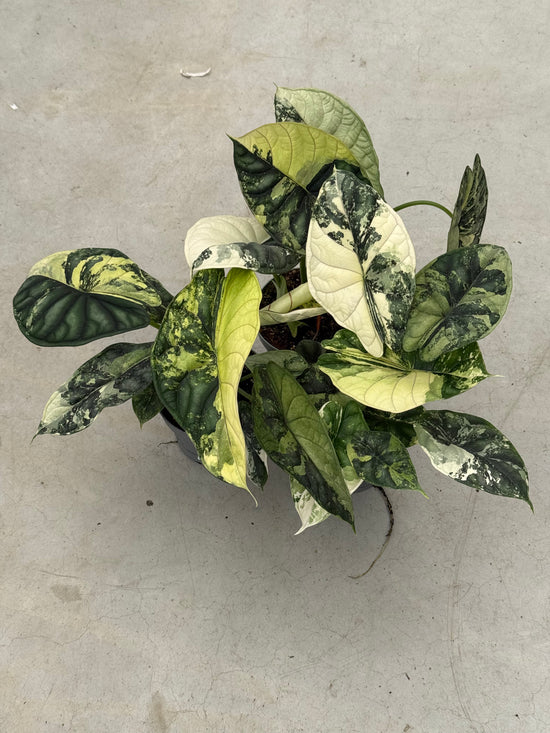 Vendor:Harmony PlantsAlocasia Dragon Scale Variegata "LARGE"
Vendor:Harmony PlantsAlocasia Dragon Scale Variegata "LARGE"- Regular price
-
€55,00 - Regular price
-
€149,00 - Sale price
-
€55,00
-
Alocasia sylvestris
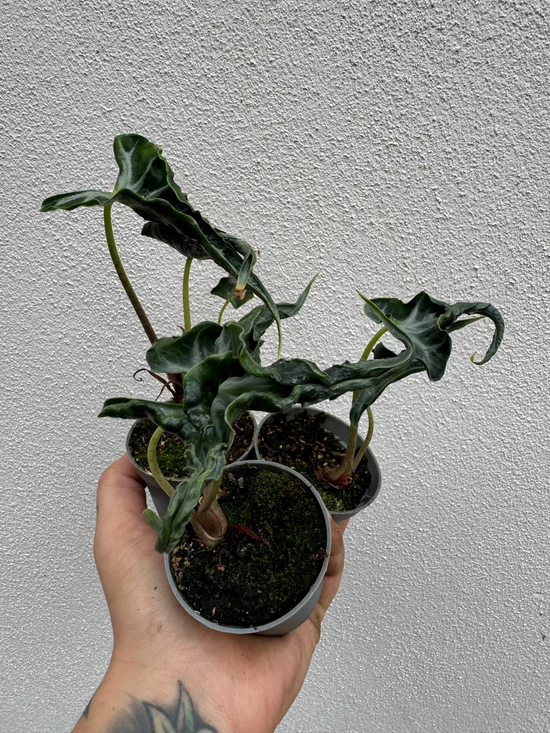 Vendor:Harmony PlantsAlocasia sylvestris
Vendor:Harmony PlantsAlocasia sylvestris- Regular price
-
€12,99 €49,00 - Regular price
-
€29,00 - Sale price
-
€12,99 €49,00
-
Alocasia Antoro Velvet
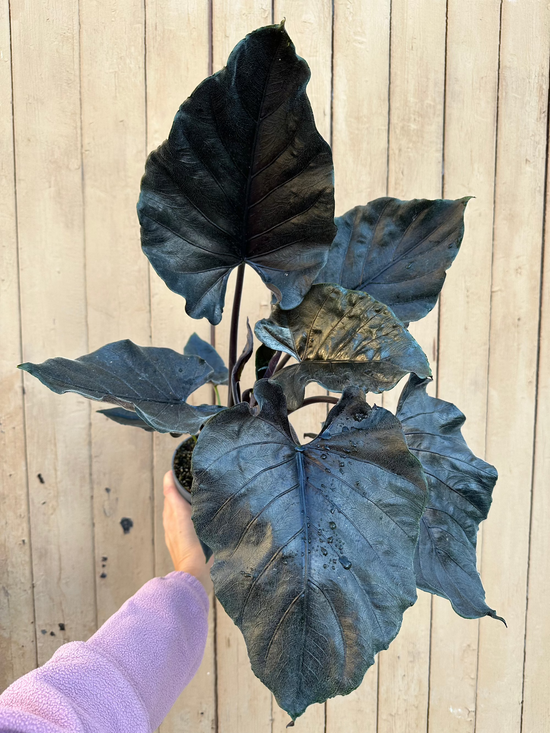 Vendor:Harmony PlantsAlocasia Antoro Velvet
Vendor:Harmony PlantsAlocasia Antoro Velvet- Regular price
-
€9,99 €19,99 - Regular price
-
€39,00 - Sale price
-
€9,99 €19,99
-
Alocasia Purple Veins
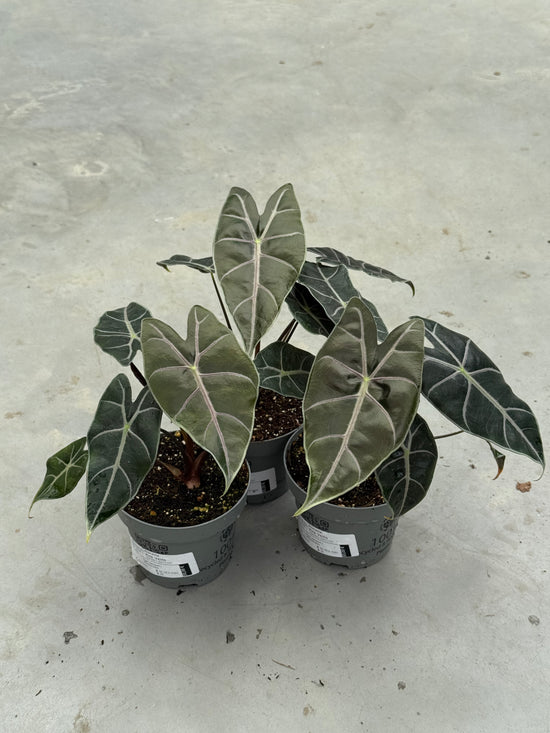 Vendor:Harmony PlantsAlocasia Purple Veins
Vendor:Harmony PlantsAlocasia Purple Veins- Regular price
-
€11,99 - Regular price
-
€24,99 - Sale price
-
€11,99
-
Alocasia Amazonica Variegata (sectorial) S
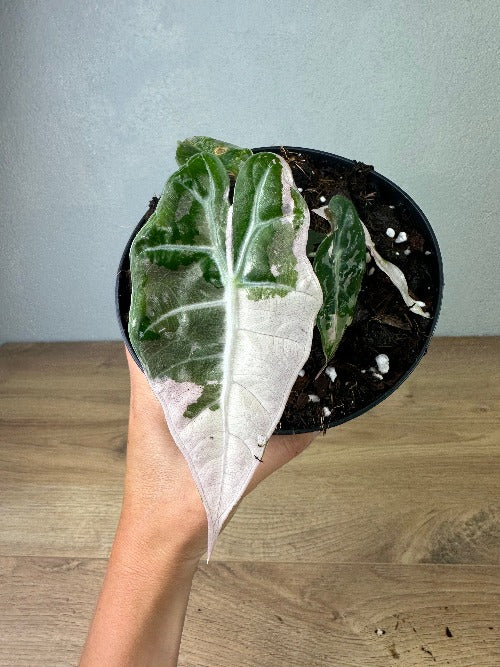 Vendor:Harmony PlantsAlocasia Amazonica Variegata (sectorial) S
Vendor:Harmony PlantsAlocasia Amazonica Variegata (sectorial) S- Regular price
-
€24,99 - Regular price
-
€89,00 - Sale price
-
€24,99
-
Alocasia Gageana Variegata Aurea
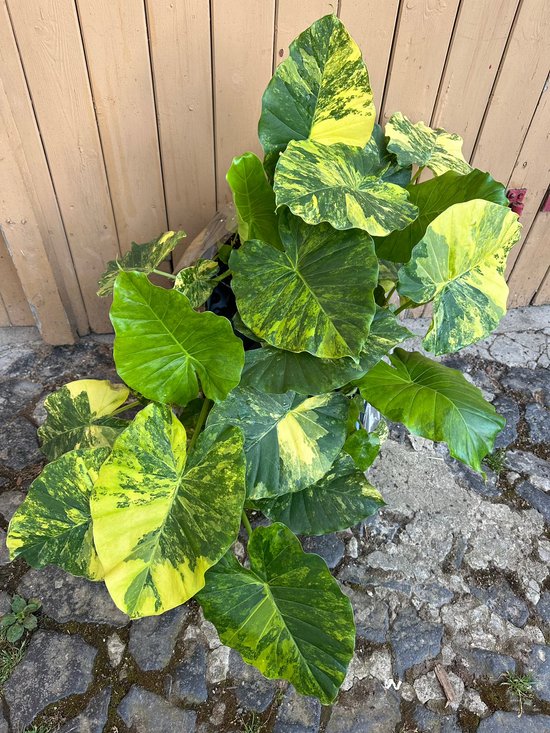 Vendor:Harmony PlantsAlocasia Gageana Variegata Aurea
Vendor:Harmony PlantsAlocasia Gageana Variegata Aurea- Regular price
-
€24,99 €39,00 - Regular price
-
€79,00 - Sale price
-
€24,99 €39,00
-
Alocasia Watsoniana
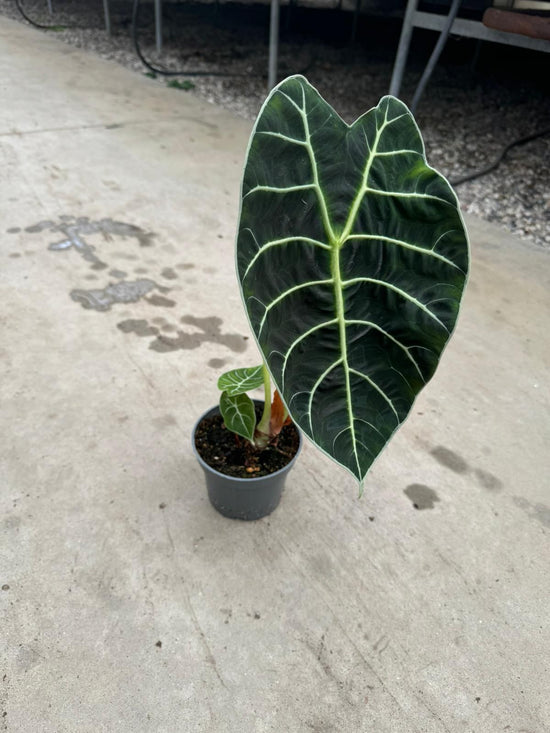 Vendor:Harmony PlantsAlocasia Watsoniana
Vendor:Harmony PlantsAlocasia Watsoniana- Regular price
-
€25,00 - Regular price
-
€39,00 - Sale price
-
€25,00
Alocasia: The jewels of the jungle
Dive into our extensive collection of Alocasia plants. With their distinctive leaves and exotic flair, alocasias are an impressive addition to any living space. Browse our range to find the Alocasia that perfectly suits your style and home. Enjoy the variety and choose the ideal Alocasia to bring green accents and tropical elegance into your living spaces. Welcome to the fascinating world of Alocasia plants!
Alocasia, also known as elephant ear plants, is a true treasure among houseplants. Originally native to the humid forests of Southeast Asia, they have found their way into our homes and are enjoying growing popularity. The characteristic feature of Alocasia is undoubtedly its striking leaves. These are large, heart-shaped and often a deep, rich green color that shines in contrast to the surrounding area. But it's not just the shape that impresses - the leaves are often streaked with vibrant patterns in various shades of green. Some varieties even display silver or white markings that resemble works of art.
What makes Alocasias even more remarkable are their bold stems. These can be shiny and sleek or have a deep crimson color that makes for a stunning contrast. Combined with the majestic leaves, the stems give the plant an almost royal elegance. However, alocasias are not only fascinating because of their appearance. They are also comparatively easy to care for and can thrive in a variety of environments. They prefer bright, indirect lighting conditions for optimal growth, but they are also quite adaptable to less bright rooms. Regular watering is crucial, although it is important that the soil does not dry out too much.
As far as humidity is concerned, alocasias like it high. This makes them ideal plants for bathrooms or kitchens where humidity is naturally higher. Alternatively, you can approach them with regular misting or increased humidity through the use of humidifiers or bowls of water. Not only are alocasias breathtakingly beautiful, but they also help purify the air indoors. They filter harmful substances from the air and thus improve indoor air quality. In addition, they give every room a piece of tropical paradise.
The special leaves of the Alocasia
The defining feature of Alocasias is undoubtedly their striking leaves. The large, heart-shaped leaves of the Alocasia shine in a rich green, strikingly contrasting with their surroundings. Some species reach a leaf length of up to one meter – a true eye-catcher in any room. But it's not just the size that's impressive: many leaves are crisscrossed with vibrant patterns in a variety of shades of green. Some varieties even display silver or white markings that almost resemble small works of art.
What makes Alocasia even more remarkable are their bold stems. These can be glossy and slender or a deep purple color, providing a stunning contrast. Combined with the majestic leaves, the petioles lend the plant an almost regal elegance.
Alocasia species
Discover our extensive collection of Alocasia species: From rare Alocasia Variegata varieties with striking white variegation to the Alocasia Black Velvet Pink Variegata, which captivates with delicate pink tones. Classics like the Alocasia Amazonica with its dark green leaves and white veins or the Alocasia Zebrina with its striking zebra pattern are also part of our range – and many more. You'll also find true rarities with unique color combinations and unusual growth habits. All Alocasias are characterized by their impressive leaves and exotic appearance, with each species having its own characteristics and care requirements. Find your personal Alocasia – to suit your style and your home.
Care tips for your Alocasia
Alocasias are comparatively easy to care for and can thrive in a variety of environments. For optimal growth, they prefer bright, indirect light conditions, but they are also quite adaptable to less bright spaces. The frequency of watering and fertilizing your Alocasia depends on several factors, including the size of the plant, the pot, the room temperature, and the humidity. Here are some general guidelines:
The right moisture
Regular watering is crucial, but it's important to prevent the soil from drying out too much. Water your Alocasia when the top layer of soil (about 2-3 cm deep) feels dry to the touch. Avoid drowning the plant in water, as Alocasias are sensitive to waterlogging. Make sure the pot has a drainage hole to drain excess water. Do not leave water standing in the saucer after watering, as this can lead to root rot. Generally, Alocasias need water more frequently during the growing season (spring and summer) than in winter. During winter, when growth is slower, watering should be more sparing. Especially during the winter months, when indoor humidity often drops, it is helpful to regularly mist the Alocasia's leaves or use a humidifier. Alternatively, place bowls of water near the plant to increase humidity.
Fertilize regularly
To ensure the beauty of your Alocasia, it should be fertilized regularly. During the growing season (spring and summer), it is advisable to fertilize your Alocasia approximately every 4-6 weeks with a balanced, liquid houseplant fertilizer. Use half the amount recommended on the package to avoid over-fertilizing. In winter, when growth is slower, reduce fertilization to once every 6-8 weeks or skip fertilization altogether.
Keep in mind that the exact frequency of watering and fertilizing can vary depending on the conditions in your home, so monitor your Alocasia carefully and adjust your care accordingly. With these additional care tips, your Alocasia will thrive and provide you with long-lasting enjoyment.
Alocasia Problems and Solutions
Like any plant, Alocasia can occasionally experience problems caused by improper care or adverse environmental conditions. Make sure to monitor your plant regularly and look for signs that indicate problems. A common problem is brown leaves, which is often due to too little humidity or too much direct sunlight. If your Alocasia's leaves turn yellow, it could be a sign of overwatering or nutrient deficiency. To resolve these issues, it's important to review your Alocasia's care conditions and adjust them as needed. Make sure to check the plant regularly to detect early signs of stress. By adjusting watering, increasing humidity, and ensuring a balanced nutrient supply, you can resolve many of these issues and keep your Alocasia healthy and beautiful.
Susceptibility to pests
Although Alocasias are robust houseplants, they can become susceptible to pests under unfavorable conditions. Spider mites and thrips are particularly common, especially in dry air or when the plant is weakened. Typical signs are fine webs or light spots on the leaves. High humidity is important to prevent infestation. At the first signs, regular showering, natural remedies such as neem oil, or special plant protection products can help.
Leaf loss in Alocasia
The arrowleaf is not a bushy plant, but loses about as many leaves as it grows, as the Alocasia is energy-intensive. A certain amount of leaf loss is therefore quite normal in Alocasias – especially when moving to a new location or during the cooler seasons. Excessive leaf loss can also be caused by insufficient light, drafts, cold temperatures, or waterlogging. Make sure the location is bright and warm and the soil is not permanently wet. If the plant loses many leaves at once, it's worth taking a closer look at its root health, watering habits, or possible pest infestation. With a little patience, the Alocasia will reliably sprout again under the right conditions.
Buy Alocasia and have it delivered to your home
Whether you're looking for a classic beauty or a rare rarity, you'll find a wide variety of Alocasia species in our online shop. From popular classics to exceptional variegated varieties with unique variegation, there's something for every taste. If you're looking to buy an Alocasia, you'll find your very own green beauty with us. Order your Alocasia easily online and have it delivered safely and conveniently to your home.
Alocasia FAQ: Care Tips
What types of Alocasia are there?
There are several species of Alocasia, including the impressive Alocasia amazonica with dark green leaves and white veins, the huge Alocasia macrorrhiza with heart-shaped leaves, the Alocasia zebrina with a striking zebra pattern, the fragrant Alocasia odora, the miniature Alocasia reginula with velvety, dark leaves , the copper-colored Alocasia cuprea and many others. Each species has its own unique characteristics and care requirements, but they are all characterized by their impressive leaves and exotic appearance.
How do I properly care for my Alocasia?
To take good care of your Alocasia plant, here are some important tips:
- Place it in a location with bright, indirect light, but avoid direct sunlight.
- Keep the room temperature between 18°C and 24°C and protect the plant from temperature fluctuations and drafts.
- Increase the humidity around the plant, especially in winter, by misting the leaves every now and then or using a humidifier
- Water the plant regularly, but allow the top layer of soil to dry slightly between waterings to avoid waterlogging.
- Use a well-drained potting soil mix and fertilize the plant during Growing season with a liquid houseplant fertilizer.
- Repot the Alocasia only when it becomes too large for its pot.
- Reduce watering and protect the plant from cold drafts in winter.
- Clean the leaves occasionally to remove dust and keep an eye out for pests and diseases.
Use these care tips to ensure your Alocasia stays healthy and beautiful.
How often do I need to water and fertilize my Alocasia?
The frequency of watering and fertilizing your Alocasia depends on several factors, including the size of the plant, the pot, the room temperature and the humidity. Here are some general guidelines:
Watering:
- Water your Alocasia when the top layer of soil (about 2-3 cm deep) feels dry. Avoid drowning the plant in water as alocasias are sensitive to waterlogging.
- In general, alocasias require water more frequently during the growing season (spring and summer) than in winter. During the winter, when growth slows, watering should be more sparing.
- Make sure the pot has a drainage hole to drain away excess water. Do not let the water sit in the saucer after watering as this can cause root rot.
Fertilizing:
- During During the growing season (spring and summer), it is advisable to fertilize your Alocasia approximately every 4-6 weeks with a balanced, liquid houseplant fertilizer. Use a halved dose of the amount recommended on the package to avoid over-fertilization.
- In winter, when growth is slowed, reduce fertilization to once every 6-8 weeks or skip it altogether.< /li>
Be sure to observe the plant regularly and look for signs that indicate a need for water, such as slightly wilting leaves. If the leaves look limp or the top layer of soil is dry, it's time to water. Fertilizing should only be done during the active growing season.
Keep in mind that the exact frequency of watering and fertilizing may vary depending on the conditions in your home, so monitor your Alocasia carefully and adjust care accordingly.
Are Alocasias toxic to cats and dogs?
Yes, alocasia is poisonous to cats, dogs and other pets. These plants contain substances such as oxalates that can cause irritation to the mouth, throat, and stomach if swallowed or chewed. This can cause symptoms such as drooling, vomiting, diarrhea, and in severe cases, difficulty breathing.
It is important to place alocasias out of the reach of pets or in an area that your animals cannot reach. If you suspect that your pet has eaten Alocasia leaves or parts of the plant and is showing symptoms such as vomiting or feeling unwell, you should consult a veterinarian immediately for appropriate treatment. Depending on the amount of plant parts ingested and the size of your pet, poisoning can be serious.
It is always advisable to educate yourself about plant toxicity and ensure that all plants present in your home are safe for your pet Pets are non-toxic to ensure their health and safety.

































